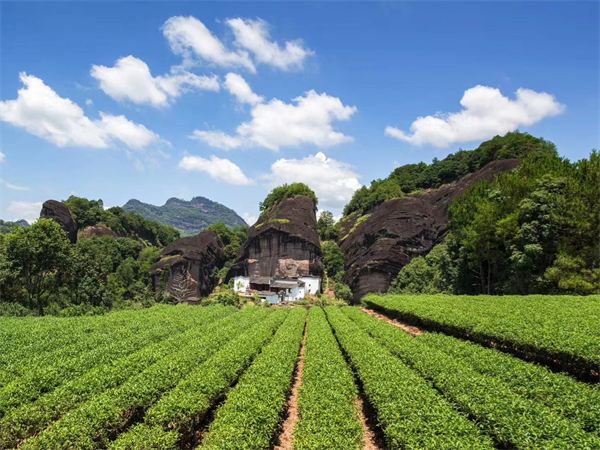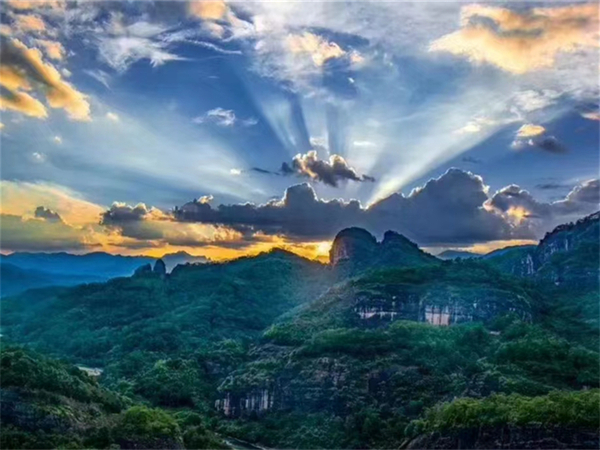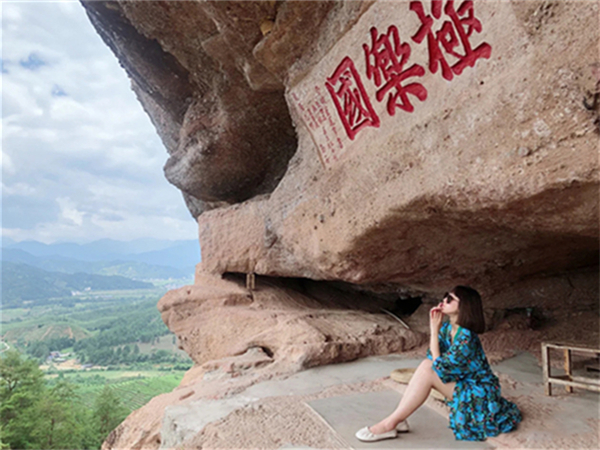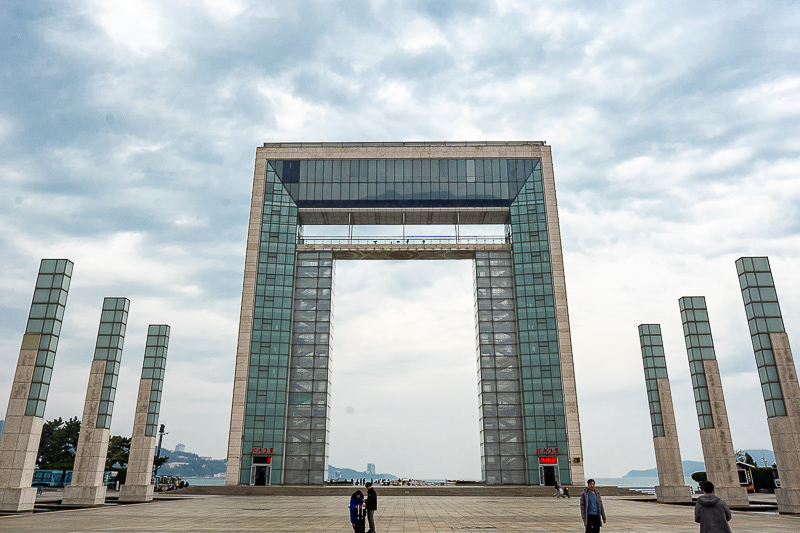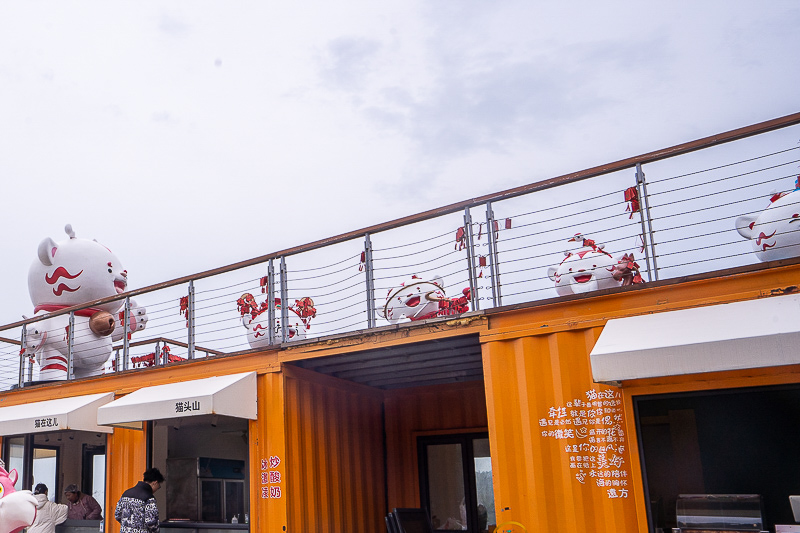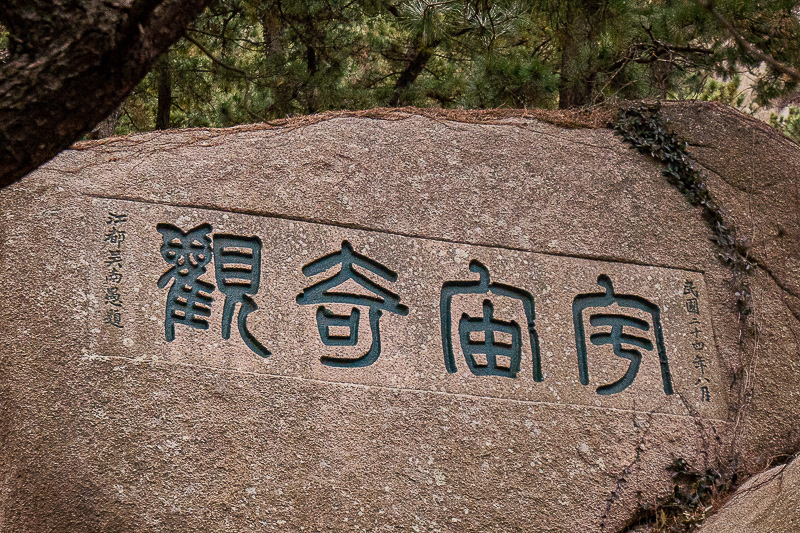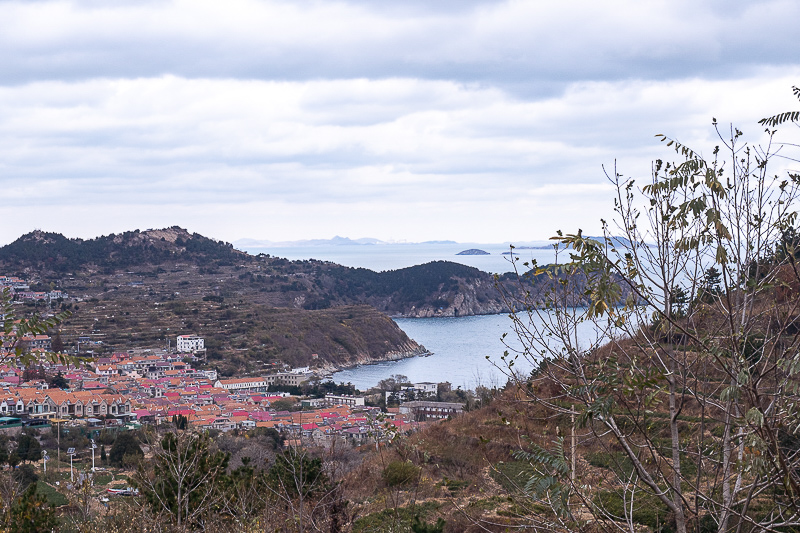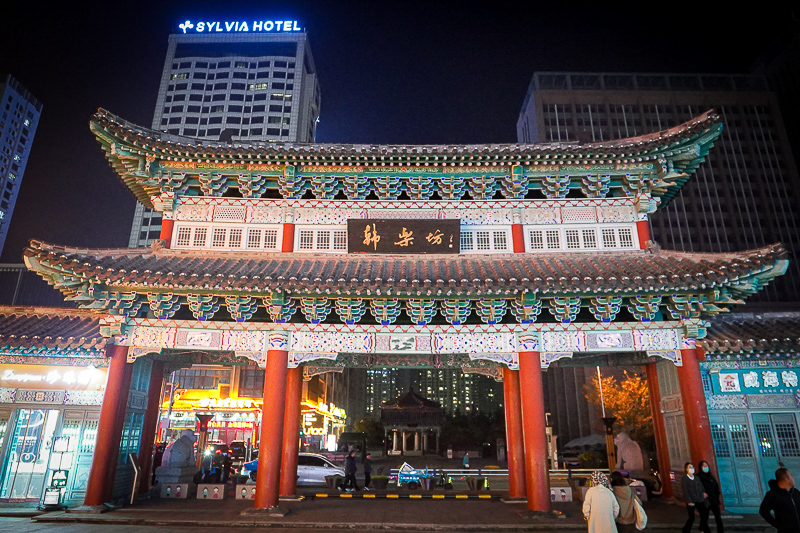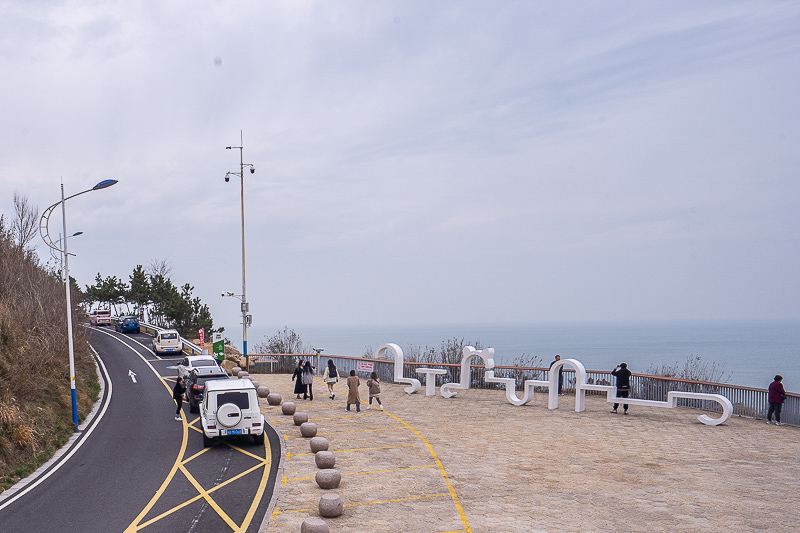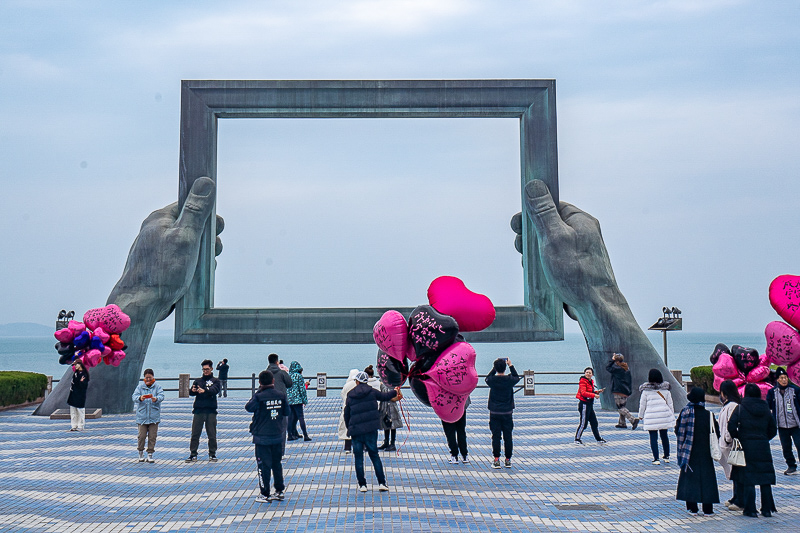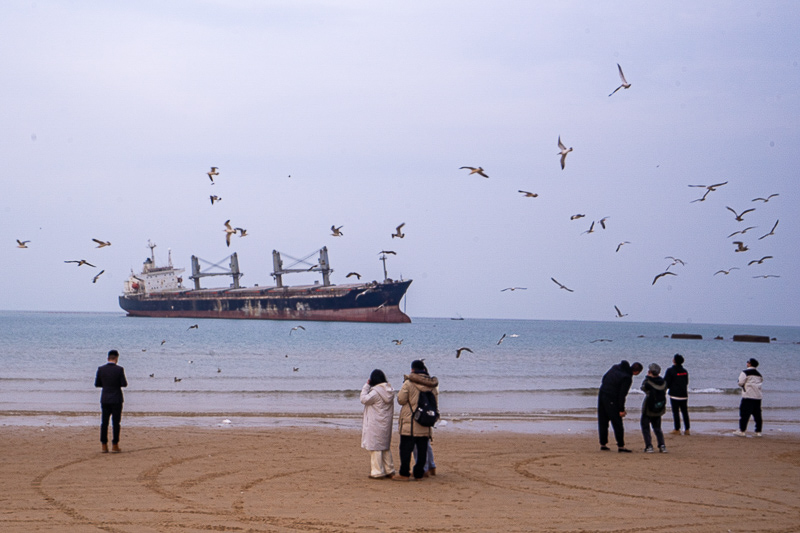本文目录
一、西安旅游攻略2017
西安,在古代是叫长安。还记得的《华胥引》里面“一世安”的这个故事,超级喜欢长安这个地方。“一世安”,一世长安。这样的地方一辈子真的不够呆。
DAY 1咸阳机场-汉唐驿客栈-钟楼-书院门-西安古城墙
DAY 2华山跟团一日游(西上北下)-回民街
DAY 3大雁塔-天下第一面-陕西历史博物馆-曲江公园-长安大牌档(小寨赛格国际购物中心)-大雁塔音乐喷泉
DAY4兵马俑+华清池一日游-回民街
其中第3天的行程其实本来只是安排了大雁塔和博物馆,但是实际上要是大家可以早起,大雁塔和博物馆大概半天就可以搞定了,然后我们比较慢加上博物馆里面有的小插曲出来的时候已经4点15了,其实要是再早15分钟的话赶去青龙寺绰绰有余,3月4月是青龙寺的樱花季,我们因为来不及所以就去曲江公园玩了。
杭州市区-机场滴滴费用 25(我们两个人加了15的小费)西安市区-机场滴滴费用 25
一个人花费 310+600+25+25+275+550+650+550=3185
一早6点45的飞机,于是乎一大早兵荒马乱的赶去萧山机场,还好有滴滴顺风车,预约了5点的顺风车,司机是个机场工作人员,很准时的带上了我们,不过建议要是一大早的飞机可以再早点,我们时间卡的刚刚好,到机场办登机牌托运行李的时候已经听到6点30的飞机的乘客请到值班主任柜台办理登记牌,差点我们也享受VIP待遇了。
西安机场很大,下飞机以后就跟着人流走,蛮长一段路的,到行李转盘取行李,然后记得跟着人流去做大巴。
西安机场大巴信息查询
西安的机场大巴很像客运站(不过我是国内到达 2号还是3号航站楼的机场大巴好像不太一样),在一个大厅里面,有一个专门买票的柜台,凭身份证买好票以后就去左手边坐车,有一个个站牌的,记得分清左边右边分别是去哪里不要排错了队。另外车票钱都是30块钱,其实可以随便做去哪里的,要是看到乘务员在问去哪里还有没有人,要是赶时间可以确认下离目的地是否方便然后选择坐上的。因为不要以为一辆大巴都能最少,我们做的大巴应该先去另外一个航站楼接人了然后再来我们这里的。
陇海大酒店维景国际酒店火车站这几个其实都离钟楼很近的,到那里下车打的就好了。
另外如果你们确定了要在西安跟团游的话,强烈建议大家可以在到达西安之前订了一日游,然后就有送接机服务直接把你送到酒店的,我们因为天气不好,所以都是提前一天才定一日游也就没有享受到这个服务,而且不提供送机服务的。ps机场也有很多现场推销一日游的,都有赠送一日游,我们没有定所以不太清楚。
小老三热米皮(西一路店)推荐他家的肉夹馍和凉皮,觉得比在回民街的都好吃,以至于我回家那天打包了好多肉夹馍带回家
回民街:有个大家都推荐的粉蒸肉,有点麻麻的味道,小伙伴不爱吃,但是我吃的好开心
酸梅汤,酸奶,这个没什么特色,值得一试
羊肉泡馍,还是在自己住的附近吃吧,我们在回民街吃的,又贵又不好吃,而且还太多一样名字的店了,傻傻分不清。
回民街实在太人山人海,去感受下就好,然后要吃当地美食还是推荐吃自己住的附近了,毕竟那些店是有口皆碑才能生存那么久。
长安大牌档这个是类似杭州新白鹿外婆家的地方吧。就是生意好太多,但是真心很有特色,而且吃的很开心,等位的时候门口有各种小游戏给你玩,还是不错的。值得一去,不过记得早点去排队。西安找个导游
天下第一面,去大雁塔的时候可以去吃下,顺路的,等位也不用,感受下,那比人都高的面条。味道嘛,天下第一面还是那个油泼面好吃点。
德发长饺子宴,用了团购点了一人份的饺子宴,然后听了服务员的推荐吃了油泼饺子。饺子好吃说不上,但是好玩,各种各样的味道,然后最后是靠油泼饺子填饱了肚子。不过,生意颇冷清,也有可能因为我们去的找,然后可以看到钟楼,位置很好,还是值得一去。
魏家凉皮感觉还是我们附近的凉皮好吃。
胡辣汤居然有各种各样的味道然后冬天or春天来一碗,好暖身子
然后还有菠菜面串串什么好多都没有吃,我下回还要去吃吃吃
啪啪啪打脸,我最后还是放照片了。为什么我照片传上来就那么大!!!
华山和兵马俑都是跟团一日游,感觉西安这方面挺成熟的,然后都蛮早回到市区了,我们住钟鼓楼,把我们送到也就5点这样。我们是选的独立成团的,全程有导游而且都是一个团,感觉蛮不错,回了市区还能去其他地方玩一下。特别可以把去城墙安排在回来早的那天,这样可以既看到夜景又欣赏了白天的雄伟。
城墙,大家晚点上去,不要像我们在上面傻傻等了半天才等到天黑。
碑林什么景点,额,我这种没什么文学历史素养的,看看就好,很快就结束了。
大雁塔的音乐喷泉额看看就好,不看也不吃亏,现在音乐喷泉很多地方都有了,所以不值得再次回去看喷泉。
然后要是时间多可以安排去别的景点,或者吃吃吃,对,多留点时间吃吃吃。
写到最后发现没有推荐住的地方汉唐驿国际青年旅舍
唯一不好的地方既是确定也是优点:整个旅舍都是外国人,我们最后一天走的时候才看到几个中国人。尴尬脸。
大推荐这个旅舍,看起来离钟鼓楼不近,但是超级方便,去哪里都方便,而且除了第一次不好找,接下来都很好找。
另外最关键的是附近吃的很多!!!!有凉皮肉夹馍串串烧烤胡辣汤反正基本吃的都有了!!!!可以一天3个不带重样的。西安美女导游
我那时候就根据这张图安排的行程,这应该是哪个去西安的小伙伴的游记里面盗图的,感谢好心人
实行淡、旺季浮动价格,“一票制”管理。门票价格为:旺季150元/人次(3月1日-11月底);淡季120元/人次(12月1日-次年2月底)。在校学生和特定人群可以享受门票优惠的政策。观众往返秦始皇兵马俑博物馆和秦始皇帝陵两景区参观,可免费乘坐旅游专车。
3月16日—11月15日 8:30—18:00(17:00停止售票)
11月16日—次年3月15日 8:30—17:30(16:30停止售票)
自驾线路:从西安自驾车前往华清宫,可沿西临高速公路前行,只需30分钟即可到达华清宫;
公交线路:从火车站(东广场)乘坐306路公交在“华清池”站下车即到
旺季全价150元,淡季全价120元,长恨歌演出费用218-988
在火车站东广场解放饭店门前乘坐306路公交车西安到秦兵马俑的旅游专线汽车。发车时间7:00-18:00,间隔10分钟。到【骊山国家森林公园】站下车,票价6元,约45分钟到达。
1、在火车站东广场解放饭店门前乘坐高速915路中巴车,发车时间每趟间隔5分钟,车票6元,乘车时间约为45分钟,至【骊山国家森林公园】站下车。
2、在火车站东广场解放饭店门前乘坐低速914路中巴车,发车时间每趟间隔5分钟,车票5元,乘车时间约为1小时,至【骊山国家森林公园】站下车。
3、由西安火车站乘西安-渭南途经临潼客运中巴,可至【骊山国家森林公园】站下车。
在西安火车站可以租车到骊山,租车费用约为180元/单程,但需要注意的是,上车时应跟司机说清楚是前往骊山景区,而不要被拉到其它人造景点,耽误到骊山的游览。
从西安自驾车前往骊山,可沿西临高速公路前行,行程约24公里(经过灞桥收费站,路桥费用10元/辆)。道路状况良好,在非交通高峰时期,车辆较少,车速可达60公里/小时,只需30分钟即可到达骊山。
骊山与华清池两个景点已合并为华清宫景区,旺季门票150元,淡季(12月1日-次年2月底)120元。
1、乘坐5、24、27、游8路等公交车在“翠华路(陕西历史博物馆)”站下车即到
2、地铁2号线至小寨站,出站后向东步行即到
免费开放实行“免费不免票”,每天限量限时发放免费参观券4000张(每日14时前限2500张,下午限1500张),发完为止。散客(凭身份证或有效证件)参观一人限领一票,当日有效,过期作废。珍宝馆费用20元/每人;唐代壁画珍品馆150元/人。
A、人工讲解:基本陈列中文讲解100元,英文或日文讲解150元;大唐遗宝专题展中文讲解50元,英文或日文讲解100元;唐代壁画珍品馆中文讲解50元。一名讲解员最多可带领10名游客参观。可以现拼团进入。缺点是人工讲解随机而定,能力素质有别;
B、自动语音导览机:有中文、英文、法文、日文、韩文语言讲解;其中中文有中文学生版,这样可以方便小朋友收听。收费标准:押金100元,基本陈列租金30元/台,基本陈列和大唐遗宝专题展租金30元/台。缺点是普遍反应速度快,人多嘈杂时有听不清的现象
每周二至周日开放,开馆期间,上午发票截止到午休时间,下午13:00以后继续发票;
冬季(11月15日-次年3月15日)9:00-17:30(16:00停止发票),夏季(3月16日-11月14日)8:30-18:00(16:30停止发票);
周一全天闭馆整修(国家法定节假日除外)
乘坐21路、521路等多趟公交车前往,到大雁塔站下车
免费,音乐喷泉(免费)钟鼓楼夜景(不上楼免费)
全天开放(音乐喷泉表演时间:周一-周五:12:00、21:00(周二喷泉水舞设备例行检修,白天停开);
周六-周日:12:00、14:00、16:00、18:00、21:00;
冬季(11月-次年1月)喷泉表演晚间为20:30;
乘坐3、6路等公交在“鼓楼”站下车。或乘坐地铁2号线在“钟楼”站下车
旺季钟楼敲钟10元3次,敲鼓另收5元
4月1日-10月25日:8:30-22:00;10月26日-次年3月31日:8:30-18:00。
##城墙上的租赁单人自行车40元/100分钟,双人自行车80元/100分钟;三人自行车60元/100分钟。
西安城墙有19个登城门点开放,可就近登城。
东线3个:东门、中山门、城墙东北角;
西线4个:玉祥门、西门(2个)、北马道西南角;
南线7个:小南门、南门(城内正门、月城吊桥)、文昌门(2个)、和平门、建国门;
北线5个:小北门、北门(2个)、尚德门(位于火车站西南侧,城内环城路1个、城外有云梯可登)
用时参考:古城墙一周全长约14.7公里。骑行一周约需80分钟左右。
机场巴士乘坐指南: G边上有公交车 D是有地铁 Y是有点远,我就查了几个能到钟鼓楼的
2号航站楼—请您在T2航站楼1楼(到达层)旅客服务中心购票
3号航站楼—请您在T3航站楼综合交通枢纽(GTC)一层购票
2号航站楼—请您在T2航站楼1楼(到达层)外部乘车
3号航站楼—请您在T3航站楼综合交通枢纽(GTC)一层乘车
##西稍门空港商务酒店线 G-------------推荐
**发车间隔约20分钟运行时间约70分钟
**机场出发首班:5:00~末班:次日2:00市区出发首班:6:00~末班:末航班到达
**线路西稍门空港商务酒店—城西汽车客运站—咸阳机场
备注:城西汽车客运站至机场运行时段:7:00-18:30;机场至城西汽车客运站运行时段:6:00-21:30,经停城西汽车客运站**发车间隔约40分钟。
**发车间隔约20分钟运行时间约70分钟
**机场出发首班:7:00~末班:20:00市区出发首班:6:00~末班:21:00
**线路高新区志城丽柏酒店—咸阳机场
##西安火车站陇海大酒店线 D------------推荐
**发车间隔约20分钟运行时间约70分钟
**机场出发首班:6:30~末班:次日2:00市区出发首班:5:30~末班:次日1:00
**线路西安火车站陇海大酒店—咸阳机场
**发车间隔约20分钟运行时间约70分钟
**机场出发首班:7:00~末班:22:00市区出发首班:6:00~末班:21:40
**线路南稍门西安宾馆—咸阳机场
**发车间隔约60分钟运行时间约70分钟
**机场出发首班:8:15~末班:20:15市区出发首班:7:15~末班:20:15
**线路小寨东方大酒店—南二环唐城宾馆—咸阳机场
**发车间隔约40分钟运行时间约70分钟
**机场出发首班:8:20~末班:20:20市区出发首班:6:40~末班:20:40
**线路东二环建国饭店—咸阳机场
**发车间隔约20分钟运行时间约40分钟
**机场出发首班:8:00~末班:21:00市区出发首班:8:00~末班:21:00
**发车间隔约30分钟运行时间约70分钟
**机场出发首班:7:00~末班:21:00市区出发首班:7:00~末班:21:30
**线路东大街维景国际大酒店—北二环威尔佳酒店—咸阳机场
**发车间隔约60分钟运行时间约60分钟
**机场出发首班:7:30~末班:19:30市区出发首班:7:30~末班:20:00
**线路城东汽车客运站—咸阳机场
**发车间隔约120分钟运行时间约40分钟
**机场出发首班:8:30~末班:18:30市区出发首班:8:30~末班:18:30
**线路城北汽车客运站—咸阳机场
**发车间隔约30分钟运行时间约90分钟
**机场出发首班:7:30~末班:21:00市区出发首班:7:00~末班:20:30
**线路西北饭店—城南汽车客运站—咸阳机场
**发车间隔约40分钟运行时间约70分钟
**机场出发首班:8:30~末班:18:30市区出发首班:8:30~末班:20:30
**线路长安区希尔顿花园酒店—高新区南中兴和泰酒店—绿地假日酒店—西港商务—咸阳机场
**发车间隔约40分钟运行时间约90分钟
**机场出发首班:8:10~末班:20:50市区出发首班:7:30~末班:20:10
**线路大威斯汀酒店—会展中心曲江华美达酒店—电视塔莱安中心—咸阳机场
**发车间隔约30分钟运行时间约60分钟
**机场出发首班:8:30~末班:22:00市区出发首班:6:30~末班:18:30
**线路彩虹宾馆—民生商厦—咸阳市政府—人民路—咸阳火车站—咸阳机场
**发车间隔约60分钟运行时间约60分钟
**机场出发首班:10:00~末班:21:00市区出发首班:8:00~末班:19:00
**线路咸阳高铁站—华泰小区—烟草公司—七厂十字—玉泉东路—文林路西口—咸阳机场
二、英文介绍旅游景点视频教程 英语导游景点讲解视频
China's Great Wall is the greatest building project in human history of civilization.
中国的长城是人类文明史中最伟大的建筑工程。
It was built in Spring and Autumn period,Warring states times, two thousand years _go.
长城建造于两千年前的春秋战国时代。
After the Qin state unified China. The chinese people connected the Great wall of various states.
秦国统一中国后,中国人把各个战国的长城连接起来。
Two generations of wise people have constructed The Great Wall intensively. _ast its project. It looks like rainbow rolling forward. It was possible to be called _orld miracle.
聪明的两代人曾经密集地建造长城,扩展了它的工程.它看起来象彩虹,滚滚向前.它有可能被称作世界奇迹。
It is the must for chinese people. When you repair Great Wall's _uins in offical _ays.
You will not only could witness Great Wall's apparance that meandered in the hills and high moutains, but could also understand the chinese nation creation history, _reat wisdom and courage of chinese people. In December 1987, Great Wall was included in‘’World heritage Name list‘’.
它是中国必须付出的代价,当你在正式的场合下,在废墟中修建长城,你不仅会见证它在高山和峻岭中婉延曲折的情景,也会了解中华民族的创造历史以及中国人的勇气和智慧,在1987年12月,长城被归录在‘’世界遗产名录"中。
马上就要到暑假了,不知道同学们接下来有没有和家长一起出行旅游的计划。下面我用英文为大家介绍推荐几个国内旅游的热门景点,欢迎大家阅读收藏。
China's Great Wall is in the human history of civilization the greatest architectural engineering, it builds more than 2000 year ago Spring and Autumn Period Warring States times, after the Qin dynasty unifies China, connects the Great Wall. The Chinese, the bright two generations once massively constructed. Vast its project, grandness imposing manner, being possible be called world miracle. Roll on, the thing is the human must, now you when mounted in former days Great Wall's ruins, not only could witness that meandered in the hills high mountains Great Wall grand appearance, but could also understand the Chinese nation creation history great wisdom and courage. the 1987 year in December Great Wall is included"World heritage Name list".
Summer Palace is one of the biggest and beautiful royal garden. It is also one of the royal heritage which is kept well. It was established in1764,and has290 hectare. During Summer, the Emperor will go there for relax, to avoid the high temperature in the Forbidden City. In the Summer Palace,it has a Kunming lake and Longevity Hill导游西安费用. We can veiling a boat in the Kunming Lake, or climb the Longevity Hill to visit the Chinese temple which on the mountain. It is a nice place for us to visit and tdce rest.
The Kunlun Mountain Pass is a very important onealong the Qinghai-Tibet highway at the altitude of 4 757 meters.In this area, there are many snow peaks and mountains.In June,the Spring brings green to trees,grass andflowers blossom everywhere in Golumd but at theKunlun Mountain Pass,it is snowing heavily so that it has become the unique natural scenery of Golumd.During July to August, The Kunlun Mountain Pass becomes a green and blossom place for tourists.
Xishuangbanna is the southernmost prefecture of Yunnan Province. The prefecture is nicknamed"Aerial Garden" for its luxuriant and multi-layered primitive woods and tropical rain forests, which are teeming with animals and plants.
Renowned as a huge natural zoo, Xishuangbanna's rain forest and monsoon jungles provide a habitat for nearly 1000 species of animals. Within thick and boundless forests wild elephants and wild oxen ramble about, with peacocks in their pride, gibbons at play, and hornbills whispering.
Thirteen species of wild life enjoy state protection, including loris, the gibbons, the red-necked cranes, the brown-neck horn-bills, and the green peacocks, which to the Dai people are a symbol of peace, happiness and good fortune and whose graceful postures can put professional dancers to shame. The region has 5,000 kinds of plants or about one-sixth of the total in China. This has earned it the renown and sobriquet"The moonstone on the Crown of the Kingdom of Plants".
Among these are such fascinating ones as the"color-changing flower" whose colors change three times daily and the"dancing herb" whose leaves rotate gently. Then there is"mysterious fruit" which reverse tastes, turning sour to sweet.
Species of trees that go back a million years are still propagating themselves. The"King of Tea Trees,"which authorities say is at least 800 years old, continues to sprout, adding extraordinary splendor to the homeland of the famous Pu'er tea. In Xishuangbanna, there is a saying:"Even a single tree can make a forest and an old stalk can blossom and beat fruit."
Originally built in 652 during the reign of Emperor Gaozong of the Tang Dynasty(618-907), it functioned to collect Buddhist materials that were taken from India by the hierarch Xuanzang.
Xuanzang started off from Chang'an(the ancient Xian), along the Silk Road and through deserts, finally arriving in India, the cradle of Buddhism. Enduring 17 years and traversing 100 countries, he obtained Buddha figures, 657 kinds of sutras, and several Buddha relics. Having gotten the permission of Emperor Gaozong(628-683), Xuanzang, as the first abbot of Da Ci'en Temple, supervised the building of a pagoda inside it. With the support of royalty, he asked 50 hierarchs into the temple to translate Sanskrit in sutras into Chinese, totaling 1,335 volumes, which heralded a new era in the history of translation. Based on the journey to India, he also wrote a book entitled'Pilgrimage to the West' in the Tang Dynasty, to which scholars attached great importance.
First built to a height of 60 meters(197 feet) with five stories, it is now 64.5 meters(211.6 feet) high with an additional two stories. It was said that after that addition came the saying-'Saving a life exceeds building a seven-storied pagoda'. Externally it looks like a square cone, simple but grand and it is a masterpiece of Buddhist construction. Built of brick, its structure is very firm. Inside the pagoda, stairs twist up so that visitors can climb and overlook the panorama of Xian City from the arch-shaped doors on four sides of each storey. On the walls are engraved fine statues of Buddha by the renowned artist Yan Liben of the Tang Dynasty. Steles by noted calligraphers also grace the pagoda.
As for the reason why it is called Big Wild Goose Pagoda, there is a legend. According to ancient stories of Buddhists, there were two branches, for one of which eating meat was not a taboo. One day, they couldn't find meat to buy. Upon seeing a group of big wild geese flying by, a monk said to himself:'Today we have no meat. I hope the merciful Bodhisattva will give us some.' At that very moment, the leading wild goose broke its wings and fell to the ground. All the monks were startled and believed that Bodhisattva showed his spirit to order them to be more pious. They established a pagoda where the wild goose fell and stopped eating meat. Hence it got the name'Big Wild Goose Pagoda'.
The Terracotta Army(Chinese:兵马俑; Pinyin: Bīng Mǎ Yǒng; literally"military servants") or Terra-cotta Warriors and Horses is a collection of 8,099 life-size terra cotta figures of warriors and horses located in the Mausoleum of the First Qin Emperor(秦始皇陵; Qín Shǐ Huáng Líng). The figures were discovered in 1974 near Xi'an, Shaanxi province,
The terracotta figures were buried with the first Emperor of Qin(Qin Shi Huang) in 210-209 BC. Consequently, they are also sometimes referred to as"Qin's Army."
The Terracotta Army of China was discovered in March 1974 by local farmers drilling a well to the east of Mount Li. Mount Li is the name of the man-made necropolis and tomb of the First Emperor of Qin; Qin Shi Huang. Construction of this mausoleum began in 246 B.C. and is believed to have taken 700,000 workers and craftsmen 36 years to complete. Qin Shi Huang was interred inside the tomb complex upon his death in 210 B.C. According to the Grand Historian Sima Qian, The First Emperor was buried alongside great amounts of treasure and objects of craftsmanship, as well as a scale replica of the universe complete with gemmed ceilings representing the cosmos, and flowing mercury. representing the great earthly bodies of water. Recent scientific work at the site has shown high levels of mercury in the soil of Mount Li, tentatively indicating an accurate description of the site’s contents by Sima Qian.
The tomb of Qin Shi Huang is near an earthen pyramid 76 meters tall and nearly 350 meters square. The tomb presently remains unopened. There are plans to seal-off the area around the tomb with a special tent-type structure to prevent corrosion from exposure to outside air. However, there is at present only one company in the world that makes these tents, and their largest model will not cover the site as needed.
Qin Shi Huang’s necropolis complex was constructed to serve as an imperial compound or palace. It is comprised of several offices, halls and other structures and is surrounded by a wall with gateway entrances. The remains of the craftsmen working in the tomb may also be found within its confines, as it is believed they were sealed inside alive to keep them from divulging any secrets about its riches or entrance. It was only fitting, therefore, to have this compound protected by the massive terra cotta army interred nearby.
三、西安大雁塔的英文导游解说词是什么
1、大雁塔是楼阁式砖塔,采用磨砖对缝(意思是将砖的 6个面磨光,用石灰、三合土、米浆粘连)的砌垒技术。大雁塔的特点是:砖结构体现出木结构的斗拱风格;砖墙上显出“棱柱”来,可以明显分出墙壁开间。这些都是中国特有的传统建筑艺术形式。大雁塔塔身高大,结构坚固,外观庄严、朴实、大方,充分体现了我国古代劳动人民的智慧和才能。
2、The Heavenly King and the Buddha in line drawings appear on the door frames and horizontal bars on the four sides of the pagoda's base. They are vividly portrayed in smooth lines and show a high level of workmanship. They serve as an important source of material for the study of paintings and sculptures of the Tang Dynasty. Out of these artistic works, the one on the horizontal bar of the west door is the most precious. It is a rare piece of art now used for the study of the Tang architecture.
3、塔底层四周门楣上雕刻有天王及佛像等线刻画,这些画刻工高超,形象生动,线条流畅,是研究唐代绘画及雕刻的重要资料,其中尤以西门楣的线刻画最为珍贵,是研究唐代建筑的珍贵艺术品。大雁塔的得名还有一段有趣的故事呢!传说玄奘在印度取经时曾住在一座大乘佛寺内。印度佛教分大乘、小乘两派。大乘吃素,小乘吃荦。玄奘住的这座寺院附近有一座小乘寺。一天该寺的僧人因吃不到肉而发愁,那天正好是菩萨布施日。一个和尚仰天叹道:“大慈大悲的菩萨一定不会忘记今天是什么日子!”他正说着,一群大雁飞来,头雁坠地而死。僧侣们个个惊愕万分,以为菩萨显灵,送来大雁以解饥苦。从此,全寺和尚不再吃肉并改信大乘佛教。他们还在大雁落地处修建了一座塔,取名“雁塔”。大雁塔就是玄奘依照印度那座“雁塔”的形式设计建造的。为了颂扬佛教,纪念玄奘,后来人们就称慈恩寺塔为“雁塔”。半个世纪后,荐福寺塔修成了。两塔遥遥相对,风采各异。因荐福寺塔比雁塔小,人们就将这座塔叫大雁塔,而将荐福寺塔改叫小雁塔了。
4、There is an interesting story about the name of the pagoda. It is said that Master Xuan Zang once stayed in a Mahayana temple in India. In fact, there are two major sects of Buddhism in India, the Mahayana and the Hinayana. The Mahayana believers are vegetarians while those of the Hinayana are non-vegetarians. Near the temple where he stayed, there was a Hinayana temple. One day, a monk was just worried about the shortage of meat in the temple. But it happened to be the General Alms Day of the Buddha, another monk looked up at the sky and sighed,“Our beloved Buddha, the Great and Merciful, will not forget what day it is today!” At these words, a flock of wild geese flew over the temple. The head goose dropped dead to the ground. The monks were all puzzled by this, and they concluded that this must be the result of the Buddha's spirit at work: to provide them with the wild goose. Ever since then, the monks of the temple became vegetarians and began to believe in Mahayana Buddhism. They also set up a pagoda where the wild goose dropped dead, and called it the Wild Goose Pagoda. The Wild Goose Pagoda that greets us today was acturally modeled after its Indian prototype. It was given the same name in memory of Xuan Zang and in praise of Buddhism. After about half a century, the pagoda at the Jianfu Temple was built. The two pagodas face each other over a distance, but assume different styles. Since the one in the Jianfu Temple is smaller than the Wild Goose Pagoda, it is often called the Small Wild Goose Pagoda.

